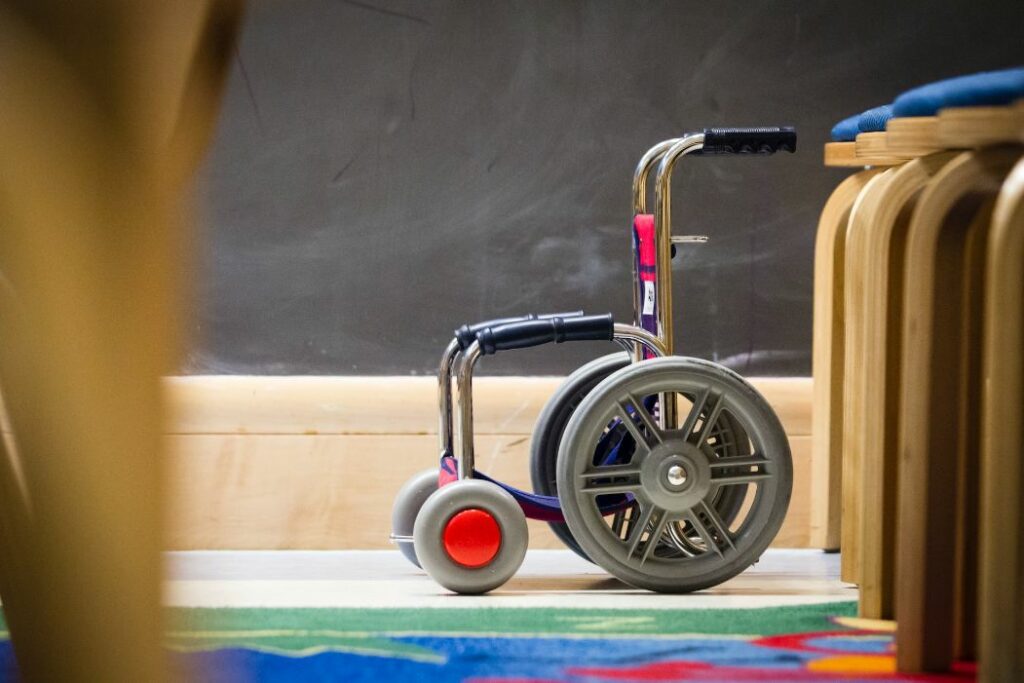Making your office space more accessible is about so much more than ticking the health and safety boxes.
It helps open up your fantastic business to more people, creating an inclusive environment for clients by showing you’re looking out for their needs. From a hiring perspective, it allows you to hire the best professionals and know they’ll feel comfortable in their workplace, improving productivity and everyday experience.
All-in-all, making your workspace more accessible is a worthwhile investment. So today, we’re looking at the best ways to renovate your office and property to make it more accessible and safer. The great news is each of the products and ideas we’ll be looking at will have various benefits, including saving costs on repairs and improving your office’s decor.
Why building accessibility is so important in 2024

1 in 6 people in Australia have disability. Taking steps to ensure your building is accessible to everyone promotes equal access and opportunity for all.
Even if it’s not a long-term mobility requirement, a staff member of yours may experience an accident at some point in their life that makes it difficult for them to walk up a staircase. Making your building more accessible creates a welcoming atmosphere and is beneficial for both your business and the local community.
While it may be easy to meet the minimum legal building access standards, taking extra steps to build a fully accessible space won’t go unnoticed by your clientele or employees. An accessible office fit-out shows your commitment to your staff and how much your value your customers.
8 ways to make your building more accessible

1. Add a wheelchair ramp
One of the first things people think about when making a building more accessible is wheelchair ramps. Beyond those who use wheelchairs, ramps will also be appreciated by anyone on crutches, those with mobility issues, the elderly, delivery people, parents with prams and anyone who finds stairs a hassle.
When building a wheelchair ramp, remember that the steeper your ramp is, the more difficult it will be to climb. Ideally, your ramp should rise 1 inch for every 12 inches.
2. Install handrails
Wall handrails have a range of benefits for you and your customers, often being the difference between an accident happening or not.
Any stairwell benefits from sturdy handrails, as a nasty tumble can cause serious injury to even the fittest individual. Handrails are also handy in hallways or areas of your workplace that aren’t on an even surface. Furthermore, they’ll provide everyone extra support during wet weather. Available in a wide range of styles and colours, handrails can seamlessly blend into your existing decor or be a great way to revamp your workspace. Style meets functionality!
3. Plan out an easily accessible office space
Often, building codes require you to design doors to be a certain width, especially for your building entrance, bathroom, and emergency exits. However, to make staff and clients feel welcome and safe, we recommend going beyond the minimum requirements and ensuring all parts of your office are easily accessible.
Many businesses will knock through walls to make a more open area for their offices. Planning your layout this way makes it easier for everyone to get around and has the bonus of making your work area look more prominent. For the best results, have larger entrance widths to accommodate wheelchairs.
4. Install wall protection panels
Walls are susceptible to wheelchair damage, table scuffs, chair damage, and other objects that inflict blunt trauma. No employee wants to tell their boss they’ve damaged the paintwork, and no one wants to spend time and money fixing scuff marks.
Prevention is the best solution to all of these interior cosmetic problems. Wall protection panels are hygienic, anti-bacterial and easy to clean, making them ideal for any environment, including medical facilities, offices, food preparation areas and childcare facilities. Available in a range of colours, wall protection not only serves a practical purpose but can also spruce up your office space.
5. Install corner guards
Perfect companions for your new wall protection panels, corner guards offer further protection to both your employees and your walls. Corners are most vulnerable to accidental impact, as it is so easy to misjudge a turn.
Corner guards can be installed to seamlessly blend in with your wall protection to add extra protection and safety to your office.
6. Install crash rails
Crash rails will soon pay for themselves if your workplace has a lot of traffic, from wheelchairs to trolleys. As the name suggests, crash rails are fantastic at absorbing impact and are great for particularly vulnerable areas.
This includes anywhere with moving furniture, carparks, and hallways. The great news is crash rails can be designed to fit in with everything else, making them both a practical and stylish addition to the workplace.
7. Update your bathroom/amenities
When you’ve got to go, you’ve got to go! Therefore, it’s important to make sure your bathroom is accessible to everyone, both employees and clients. Simply installing a handrail by the toilet will make life easier for those who need it and won’t intrude on those who don’t. This is likely a legal requirement in your building, so if your bathroom isn’t accessible, you’ll want to address this sooner rather than later.
Likewise, improving the functionality and accessibility of any sink, counter, cabinet, or shower facility in your workplace will make life easier for your employees, making them happier and more productive.
8. Remember your parking lot and outside area
When it comes to making your workplace more accessible, it’s essential to think outside the building itself. Depending on the business, some will have more options for improvement than others.
For example, for those with larger car parks, consider creating specialised parking spaces for those with disabilities. Ideally, these will be the spaces that will provide the most accessible entry point to work. To take things to the next level, you can add handrails to assist with walking up and down stairwells and ramps.
Tips to improve the accessibility of your office
- Make the most of your layout: We understand everyone has a budget. Along with a few helpful installations, simply rearranging furniture and large objects can create more space to move.
- Consider long-term benefits: It’s always tempting to resist change, but there are long term-benefits to making your office more accessible. Just a few simple changes will make your business more welcoming and inclusive.
- Use quality products and materials: Not all products are created equally. Using the best products and the right ones for your needs will mean your new installations will serve you well for years to come.
- Hire professional contractors: Any renovation project will be time-consuming, especially if you have a business. A builder or contractor will not only have the whole renovation process finished quicker than you could, but you’ll have the peace of mind that comes with knowing the job has been done right.
Looking for some advice on how to make your office more accessible? We’re here to help. When you need something to protect your walls, the Rootex interior wall and door protection team is here to help. We’ve built our reputation on quality designs and installations we proudly stand by. Our team has successfully done many projects and is ready to help with all your renovations.
With our expert approach, we’ll develop wall protection to meet your specifications and needs. Get in touch today to talk about how we can make your office safer and more accessible for everyone.
